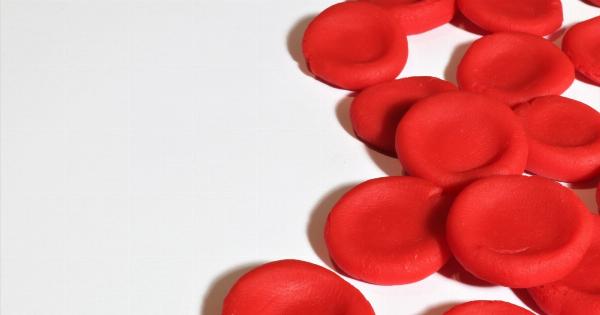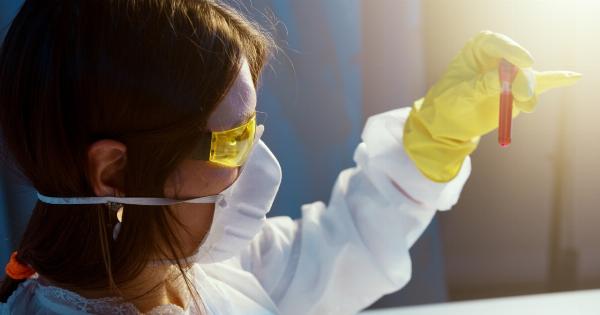In a world where so many people are in need of life-saving transfusions, the act of giving blood takes on a greater significance.
Each time an individual donates blood, they have the power to save lives and bring hope to countless individuals and families. With over 110 million blood donations collected worldwide every year, this selfless act has become an essential component of modern healthcare systems.
In this article, we will explore the importance of giving blood and how it can truly be seen as giving life.
The Need for Blood Donations
Every two seconds, someone in the United States needs blood. Whether it’s for emergency surgeries, cancer treatments, childbirth complications, or chronic illnesses, blood transfusions play a critical role in modern medicine.
Without an adequate supply of donated blood, hospitals and healthcare providers would struggle to meet the needs of their patients.
The Life-Saving Impact of Blood Donation
When someone donates blood, it goes through a rigorous screening process to ensure its safety and compatibility.
Once approved, the donated blood can be separated into its various components – red blood cells, plasma, and platelets – which can be used for different medical purposes. Here are some of the life-saving impacts of blood donation:.
1. Reducing Mortality Rates
In emergency situations, such as car accidents or natural disasters, blood transfusions can make the difference between life and death.
By replenishing the blood supply of individuals who have suffered significant blood loss, donated blood can significantly reduce mortality rates in critical situations.
2. Supporting Cancer Treatment
Cancer patients often require frequent blood transfusions due to the impact of cancer treatments on their body’s ability to produce healthy blood cells.
Donated blood helps these patients replenish their blood counts, enabling them to continue their treatment and fight against cancer.
3. Aiding Chronic Illness Management
Individuals with chronic blood disorders, such as sickle cell disease or hemophilia, rely on regular blood transfusions to manage their condition.
By providing these individuals with a fresh supply of healthy blood cells, blood donations greatly improve their quality of life and overall health.
4. Supporting Organ Transplants
Organ transplant surgeries often require blood transfusions to ensure the success of the procedure. Donated blood not only aids the recipients but also supports the transplant teams in maintaining stable conditions during the operation.
The Process of Blood Donation
Now that we understand the vital role of blood donations in saving lives, let’s explore the process of giving blood:.
1. Eligibility and Screening
Before donating blood, potential donors must meet certain eligibility criteria. These criteria ensure that the blood collected is safe for both the donor and the recipient.
Additionally, each donor undergoes a screening process that includes a medical history review, a mini-physical examination, and testing for infectious diseases.
2. The Donation Process
The actual donation process is relatively simple and usually takes around 10-15 minutes. A healthcare professional will clean the donor’s arm and insert a sterile needle to collect the blood.
The collected blood is then collected in a bag, which is properly labeled and sent for further processing and testing.
3. After-Donation Care
After donating blood, donors are typically provided with refreshments and are advised to rest for a short period. It’s important to stay well-hydrated and avoid any strenuous activities that may lead to dizziness or fainting.
Donated blood cells are replenished within a few weeks, allowing donors to continue their regular activities without any long-term effects.
Encouraging Blood Donations
Despite the constant need for blood donations, many countries struggle to maintain an adequate supply. To encourage more people to donate blood, here are some key strategies:.
1. Awareness Campaigns
Creating awareness about the importance and benefits of donating blood is crucial.
Through mass media campaigns, social media engagement, and community events, the message can reach a larger audience, ultimately inspiring more individuals to become blood donors.
2. Organizing Blood Drives
Blood drives are events where individuals can come together to donate blood in a convenient and organized setting.
By partnering with corporate organizations, educational institutions, and community centers, blood drives can attract a large number of potential donors while also fostering a sense of community.
3. Recognizing Donors
Recognizing and appreciating blood donors for their selfless contributions can create a positive cycle of motivation.
Publicly acknowledging their efforts through certificates, badges, or social media recognition can encourage others to follow suit and become blood donors themselves.
Conclusion
Giving blood is indeed giving life. The act of donating blood has the power to save lives, support ongoing treatment, and bring hope to those in need.
With consistent efforts to raise awareness and encourage more people to become blood donors, we can ensure an adequate and sustainable supply of blood, ultimately making a significant difference in the lives of individuals and entire communities.


























